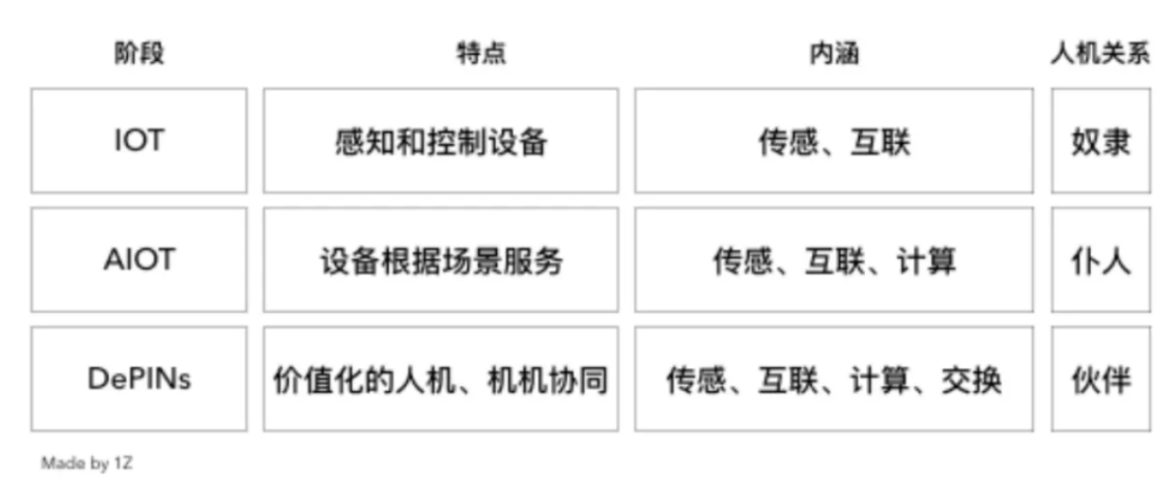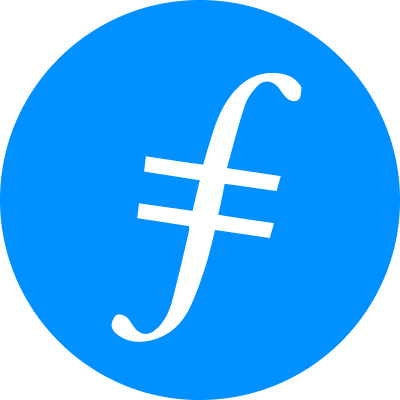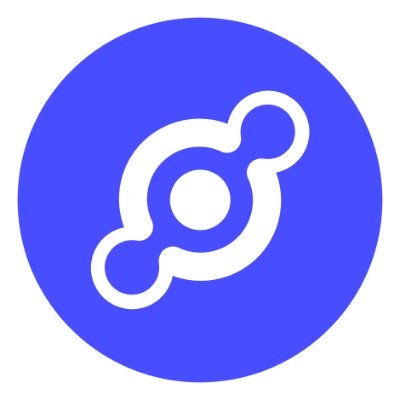DePIN: A Bridge Between the Real World and Blockchain
Written by: 1Z, Founder of KetchupDAO
What's New: What is DePIN?
De: De centralized
P: P hysical
I: I nfrastructure
N: N etworks
Literal translation: Decentralized Physical Infrastructure Networks. In simple terms, it is a system that uses tokens to incentivize the collective construction of physical infrastructure networks in the real world. It is a bottom-up approach that builds a basic set of information services from the perspectives of individual value, incentives, privacy, cost-effectiveness, and more.
Bottom-Up Construction
The bottom-up approach to infrastructure construction is not a new concept in history:
On the edge of the oasis, simple relay stations initially provided supplies for caravans (similar to the basic nodes in DePIN). Merchants and artisans gathered here, and the relay stations gradually prospered, eventually evolving into transportation and cultural centers like Chang'an and Dunhuang. These spontaneous relay stations, due to their unique value and services, gradually connected and ultimately constructed the magnificent Silk Road. The formation of the entire Silk Road is a decentralized infrastructure construction, based on individual needs and values, reflecting the decentralized collaborative effect of the real world. This bottom-up decentralized construction of the digital world will also bring robustness, stability, and network effects. However, the major drawback of bottom-up driving, lacking credit and incentive mechanisms, is that it is "slow." The decentralized credit of Web3 and the numerous incentive mechanisms of tokens just happen to complement this, effectively solving the efficiency problem of "speed."
Dissolving the Boundaries between Humans and Machines
Hashkey has designed a concise formula for DePIN: Web3 + AIoT = DePIN. It captures a concept: leveraging Web3 to carry the value created by AGI in the Internet of Things.

DePIN can be seen as the next stage of evolution for AIoT. In this new stage, Artificial General Intelligence (AGI) endows devices with brains and consciousness, while Web3 provides the foundational credit, value, incentives, rights, and supply-demand matching for bottom-up IoT network construction. IoT devices are mapped to on-chain assets, endowed with immutable device identities (DID) and value containers (Wallet). Furthermore, the data collected by devices and their execution actions can be tokenized and exchanged with humans or other devices through decentralized exchanges (DEX). This allows "machines" to become "us." (The original intention of creating QQ-IOT nine years ago was to assign QQ numbers to each device for communication between machines and between machines and humans.)
Boundaries: Lightening the Load for DePIN
Returning from imagination to the present. According to the definition of "decentralized physical infrastructure," almost all distributed networks can be classified as DePIN:
Filecoin, Arweave: Decentralized hard drives
Ethereum: Decentralized computers
Bitcoin: Decentralized ledgers
But clearly, the definition is too broad and can easily lose focus.
Narrow Definition of DePIN

Mason Nystrom more precisely describes a specific type of network, distinguishing "Decentralized Resource Networks" (DeREN) from "Decentralized Infrastructure Networks" (DePIN), which makes DePIN no longer a generic term for all distributed networks, but rather a type of network with specific characteristics and functions. Both DePINs and DeREN are network concepts that optimize the distribution and use of hardware resources through incentive mechanisms, but they differ in their applications and functions regarding resource substitutability and geographic location dependency.

DePIN: A network model where geographic location is a key factor, deploying geographically specific hardware devices through incentive mechanisms to generate non-fungible resources. How to understand non-fungibility? Mobile phone base stations (China Tower) can be seen deployed in various places in the city. However, the same type of base station, Base Station A in Tsim Sha Tsui and Base Station B in Sha Tin, cannot be interchangeable due to their different geographic locations. In this sense, each base station is a unique non-fungible resource.
DeREN: A resource network with weaker geographic location dependency, which establishes a market through incentive mechanisms and increases the supply of existing or idle substitutable resources. These resources are generated by hardware that is independent of geographic location. In the cloud services field, DeRENs are similar to Infrastructure as a Service (IaaS) in the cloud. For example, using Avware for storage, the user experience is generally less correlated with the user's geographic location, and the services are highly homogeneous.
Imperfect Pioneer: Helium
Although Helium has faced much criticism, it is undoubtedly the leading pioneer of "narrow DePIN" in terms of market cap and recognition.

Introduction to Helium
Helium is a DePIN based on the long-range, low-rate wireless communication protocol LoRaWAN. Its goal is to create an open, decentralized network where anyone can build and maintain the network by purchasing and deploying Helium hotspot devices, providing coverage for devices that require wireless data transmission. In other words, everyone is doing what China Tower (the company that builds base stations for telecom, mobile, and unicom) does, with the slogan "People's Network."
Current Status of Helium
A few simple indicators:
- HNT (Helium Token): As of August 2023, the price of HNT is around 2 USDT, down 95% from its peak (compared to Bitcoin's -60% during the same period), performing poorly among all tokens.
- Technical Route: It has currently migrated from its own L1 to Solana, sharing the relatively rich ecosystem on Solana (which also simplifies things). After LoRaWAN, Helium's new narrative is about the construction of 5G micro base stations, serving as a supplement to traditional 5G operator networks.
- Coverage: Helium hotspots: 986,743; countries covered: 190; cities: 77,263.

Advantages and Criticisms
First, the advantages: Helium successfully proves the market fit (PMF) for DePIN types, demonstrating that it is a novel concept accepted by the market. Its network coverage also proves its practical application value. However, there are significant criticisms:
- Confused Business Model: Helium is based on LoRaWAN, a transmission protocol more suited for agricultural and smart city applications. Consumers build and maintain the network, while commercial entities serve the users. This forms a consumer (C) to business (B) model. However, the networks set up by ordinary people are often unable to meet commercial demands, such as network quality, credibility, scale, and price, affecting the operational efficiency and effectiveness of the network.
- Consensus Design Flaws: DePIN considers geographic location as an important factor. Helium's Proof of Coverage (PoC) consensus mechanism theoretically ensures effective coverage of the LoRa network, but in practice, it has not achieved effective matching of supply and demand (there's simply not much valuable "demand"). For example, buying a few Helium machines in the Sahara Desert can still mine HNT, but what value does that hold?
- Rough Token Economy: In the initial stages of the Helium project, the founding team and early investors accumulated a large amount of HNT, resulting in community members receiving less than 30% of HNT. This unfair distribution model, combined with the gradually decreasing HNT rewards over time, has led to lower-than-expected returns for new participants, negatively impacting the project's long-term sustainability. Unlike internet software products, IoT products have significant marginal costs. Before reaching consumers, device terminals must go through various sales networks, including agents at different levels. When Helium's HNT price fell to a level that shook market confidence, agents faced unsold inventory (several companies in Shenzhen had invested tens of millions in Helium devices), leading to operational difficulties for agents.
- Market Promotion Stains: Helium likely recognized the challenges of the C2B model and misleadingly claimed that Lime (a scooter company) was one of its users. This false advertising and internal misconduct were exposed by Forbes, damaging its reputation and leading to its delisting from Binance, reflecting issues in Helium's business model and credibility.
- Weak Ecosystem: Helium L1 is developed and written in Erlang, which is non-EVM and missed the explosive growth of DeFi Summer, making it an island. Fortunately, it has now migrated entirely to Solana.
Despite the issues with Helium, an open attitude should be maintained, believing that it is merely exploring the difficult first steps of decentralized networks. For Helium's early adjustments, there is no need to overly pursue an ideal state of "complete decentralization" and "immutability." At least, in a survey of over a dozen LoRa device manufacturers in Shenzhen, they all have a certain understanding of Helium, which has already surpassed the "outreach" level of many Web3/Blockchain projects.
Future Value: The Possibilities Brought by DePIN Links
Some question whether DePIN is just a hype of existing concepts. Indeed, Helium has been around for nearly 10 years. However, the essence of progress often lies in continuously excavating and optimizing old concepts to reach new breakthroughs.
Trust Layer: Reliable Data in the Real Physical World

The classic model of the Internet of Things includes three core levels: sensing, networking, and applications. However, DePIN introduces a crucial "trust layer." This layer focuses on ensuring the authenticity of data, the reliability of rights, and the fairness of incentives.
How to understand this trust relationship? It can be illustrated with an idealized scenario of a legacy trust:
An elderly person nearing the end of life uses a smart contract to lock in their digital legacy. Sensors throughout their body monitor their vital signs in real-time.
(1) When the doctor determines that the elderly person has passed away, they press a trigger to call the main legacy contract.
(2) The main legacy contract calls the oracle contract, allowing oracle nodes to verify the data from these sensors.
(3) The oracle contract uses Byzantine algorithms to verify the consistency of the data returned by the various sensors through a distributed network.
(4) When enough nodes confirm that the elderly person has passed away, the main legacy contract is triggered.
(5) The elderly person's digital legacy is unlocked, and assets are transferred to the pre-designated accounts of their spouse and children.
(6) The core transaction is recorded on-chain, while the sensor data is stored on IPFS, ensuring that the data can be audited by a legal team.
In this scenario, only when the sensing, networking, and applications can all be trusted can the justice of the final outcome be guaranteed.
Network Layer + Trust Layer

The combination of the network layer and the trust layer will be more mature than ever. The technology at the level of IoT communication networks is also continuously iterating forward. With the increasing maturity of technologies like WiFi 7, Bluetooth 5, and UWB, data transmission speeds have improved, the number of connected devices has increased, and latency issues have been effectively alleviated. At the same time, self-organizing network technology is also continuously strengthening. Compared to when Helium launched in 2013, there are now numerous solutions supporting mesh networks (decentralized self-organizing networks), such as Zigbee, Z-Wave, and Thread, as well as newly emerging protocols like WiFi 7 and Bluetooth 5.4, all of which further promote the proliferation of mesh network solutions.
The decentralization, dynamic expansion, self-organization, self-management, proactive error correction, and self-balancing characteristics of mesh networks align perfectly with the DePIN concept. These natively mesh-supporting chips and modules, when combined with DePIN, may no longer need to be built completely from scratch like Helium, but can rely on simple OTA for DePIN compatibility.
Trust Layer + Application Layer
High-Performance Public Chains:
At the application layer, the underlying infrastructure has also been comprehensively optimized, significantly improving the throughput capacity of public chains, allowing key IoT data to be uploaded to the chain at a lower cost through Roll-up or some new public chains. The value of Web3 is no longer limited to just fee settlement.
Asset Modeling (Digital Asset Modeling):
Asset Modeling (Digital Asset Modeling):
The combination of IoT devices and Web3 opens up new avenues for assetization of devices. Thanks to the emergence of new types of tokens in Web3, we can achieve multidimensional asset modeling of devices using standards such as ERC-721, ERC-1155, and ERC-3525. Not only can device ownership be NFT-ized, but other digital rights (such as revenue rights, decision-making rights) can also be precisely defined, making them tradable digital assets. The data generated during the operation of the device can also trigger changes in these rights through oracles. Ultimately, devices are endowed with liquidity, achieving comprehensive "assetization." It can be said that the rich variety of token types has driven the assetization of devices, transforming the Internet of Things into a value internet. It opens up new spaces for exploring the economic model of IoT devices.
Here we propose the concept of asset modeling (Digital Asset Modeling), which differs from tokenization and traditional securitization. It abstracts and programs the expression of real-world assets through various types of digital assets and financial programming, rather than simply generating ERC-20 tokens or securities. Asset modeling focuses on decomposing and reconstructing assets from multiple dimensions, designing new digital asset relationships and interaction logic. This allows the digital world to better reflect the complexities of the real world. Overall, asset modeling represents a new paradigm for expressing digital assets and financial programming, creatively expanding the scope of the digital world.
- NFTs (ERC-721, etc.) allow for the generation of unique digital assets, defining absolute ownership of the asset.
- SFTs (ERC-3525, etc.) can split an asset into tradable asset shards, retaining some degree of uniqueness while enhancing liquidity.
- Complex token relationship standards (ERC-6551, etc.) attempt to model the multidimensional attributes of assets, such as revenue rights and usage rights. This expresses the separation and reorganization of different rights of assets.
In summary, the rich variety of token types provides the possibility for the assetization of IoT devices, opening up new spaces for the economic model of IoT devices. The entire Internet of Things will evolve into a brand new liquidity-based value network.
An Example of Asset Modeling (Digital Asset Modeling)

Modeling this shared power bank as a collection of usage assets.
- Ownership / Dividend Rights A: Described using ERC3525's SFT, where the treasury generates income and dividends can be obtained.
- Function Mounting B: Mounted on the SFT through ERC 6551's TBA.
- Function C (Power Bank Rental): Each power bank is mapped to an NFT of 1155, combined with 4907 to implement functions such as NFT lending and collateral.
- Function D (Large Screen Advertising): The effective display time of the daily large screen is split into minute segments as SFT of 3525, which are auctioned freely. The highest bidder wins.
- Function E: Payments are automatically made to machines providing "return" services through the shared power bank network.
- Function F: Automatic payment of NFT bills for consumption costs sent by the mall.
- Other G: The overhead camera monitors customer flow in the mall, and through oracles, adjusts the rental price of the power bank.
We see that a originally simple shared power bank machine, based on the trust layer of DePIN, has been decomposed into various types of assets and rights, completely transparent and decentralized.
New Possibilities in Supply Chain Finance
When we talk about the splitting of digital rights of devices on-chain, we are actually exploring a new type of asset proof and circulation method. Using DePIN as an intermediary, it is not just a pure technical connection but a bridge for finance and supply chains. In traditional supply chain finance, small and medium-sized startups often face significant financial pressure when trying to produce hardware products. This is because producing consumer-grade hardware requires substantial upfront investment, and the return cycle for these investments may be long. To support production, companies must seek external financing or loans, which is not something every company can easily achieve. As a result, many promising hardware prototypes ultimately fail to commercialize due to funding issues. However, if we utilize Web3 to put the future revenues generated by the devices (such as sales, rentals, etc.) on-chain and transform them into digital assets, these assets will gain liquidity. This means that startups can use these anticipated future revenues as collateral to collaborate with upstream hardware suppliers, providing the necessary funding for production activities.
Suppliers then have a new type of risk assurance—they are not just cooperating based on the startup's credibility but are making decisions based on the authenticity and verifiability of on-chain assets. This model creates a win-win cooperation scenario for small and medium-sized startups and suppliers. Startups gain financial support and reduce production risks, while suppliers obtain a more stable and reliable source of income by holding digital assets.
In summary, by splitting the rights of devices and representing them on-chain, combined with supply chain finance, we can create a more flexible, efficient, and secure financial environment, providing stronger support for hardware innovation.
Native RWA
The definition of RWA (Real World Asset) is undergoing a transformation. Traditionally, we viewed it as the mapping of off-chain financial products (such as bonds, real estate) onto the blockchain. However, many people's perspectives are more open, believing that the scope of RWA should be broader. As Irving Fisher defined assets: anything that can generate continuous income.
The concept of "native RWA" refers to things in the real world that are realized through Web3 technology, with on-chain digital rights being split. This process of assetization can create value that exceeds the sum of its individual parts. Among them, DePIN becomes a core component of RWA. It connects machines with the real world through the sensing layer and network layer, significantly reducing friction in credit and transactions, thus revealing the true potential of Web3. This not only provides us with a refreshing perspective on how to view and utilize real-world assets but also brings new opportunities for blockchain technology in practical applications.
Transformations often stem from small sprouts. DeFi initially was just a niche plaything on the fringes of Web3, but it has now opened up new horizons. Similarly, attempts like DePIN are still in their infancy, trying to connect the digital world with the real world and build new infrastructure. There is no need to demand immediate perfection; rather, we should provide encouragement and space for inclusivity and participate in nurturing future transformations.












